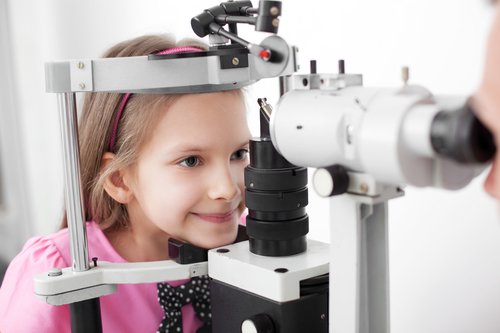Back to School Eye Exams | Your Kids Need Them
August 7, 2018

Back to school means scheduling your child for a regular eye exam. As children grow, so do their eyes, and their visual needs are constantly changing.
Until they reach the age of 18-21, you can expect their vision to be constantly changing as they grow. More specifically, you’ll notice that their refraction, their need for glasses, will be changing, too.
Axial Length
The distance between the surface of the cornea and the surface of the retina (the light sensitive tissue which lines the inside of the eye) is called the axial length.
The axial length directly correlates to the refraction. The longer the axial length, the more nearsighted the individual. In other words, the larger or longer the eye, the more nearsighted is the individual.
For every 1 mm increase/change in axial length, there is a 3 diopter change in refraction.
Eyes Grow
As your child grows, expect the eyes to get longer until age 18-21. You can see that as the eye continues to mature, the eye gets longer...increasing the axial length.
Childrens’ eyes become more nearsighted with time (because the axial length increases with growth).
Babies are born with an axial length of 17 mm, that is, they are born hyperopic (farsighted). As the eye grows, they become less farsighted (axial length approaches 23 mm).
Children requiring farsighted glasses may “grow out of them” as eye matures as the eye approaches a neutral length. On the other hand, nearsighted children will only become more nearsighted with time.
Use back to school as a reminder to schedule your child for an eye exam to make sure they are able to see as well as they possibly can!
[/et_pb_text][/et_pb_column][/et_pb_row][et_pb_row _builder_version="3.3"][et_pb_column type="4_4"][et_pb_text _builder_version="3.3"]
If you would like to make an appointment with Drs. Whitten or Rose, you may CALL US or USE OUR CONTACT FORM.



